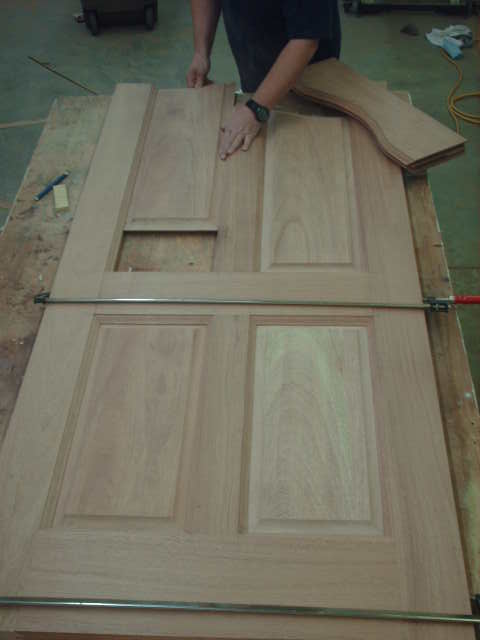Question
The pictures are of panels for this mahogany entry door that I'm building. It's African mahogany. In the rough they looked the same, but after planing and shaping, one board looked lighter in color with more sap, maybe even a different species. Heck, I don't know. I have a little experience with Honduran and African and can tell between the two but I have never seen either be this light in color. I need some advice before shucking out another 5.00 a BF and driving 120 miles round trip. I thought I would see how it stained out before I glued it to the point of no return, and I just don't feel good about it. Should I stain it, clamp it without glue or panels, then clear coat it in order to finish the panel groove? I'm sure it would be better but maybe unnecessary - maybe just a little silicone around the panel on exterior side after door is complete will suffice. I try to do everything the absolute best way I can, and hardly ever regret it, but hell - enough is enough. What do you think?

Forum Responses
(Cabinetmaking Forum)
From contributor A:
I have seen this quite often. I built my personal kitchen with that lighter colored wood sorted out from other jobs. Two years later you need to look close to pick out the lighter wood. Some that started out dark are a real dark brown now. You may or may not get away with this. If it is getting stained, you will be fine. I try to tell the customers about cherry and mahogany evening out with age.
Please don't laugh but... do you think I can take them to town and put them in the tanning bed? I know it sounds crazy, but I did read where a guy left his shoes on a mahogany floor that was unfinished, and when he picked up his shoes the next day, there were two noticeably lighter shoe prints. The more I think about it, the more I like it.
Same species, I bet. Just a different tree or near the root of the tree. If you want it to match, I would suggest making another panel out of some other board that matches better. I am sure the suntan won't do what you want.
I suspect that the staining will help with the color but not with the grain mismatch. Working with wood has challenges like this and that is why we have so much fun. Best is to match each part after planing but before milling. I'm sure you don't want that advice at this point, however.
If it is any consolation, I have purchased doors and other finished wood products from major manufacturers to install in houses that had similar mismatches that you display here. And I am not talking about Home Depot products. It boils down to what your customer can live with for the money spent. But more important is what you can live with knowing that your product will speak for you long after you get paid.